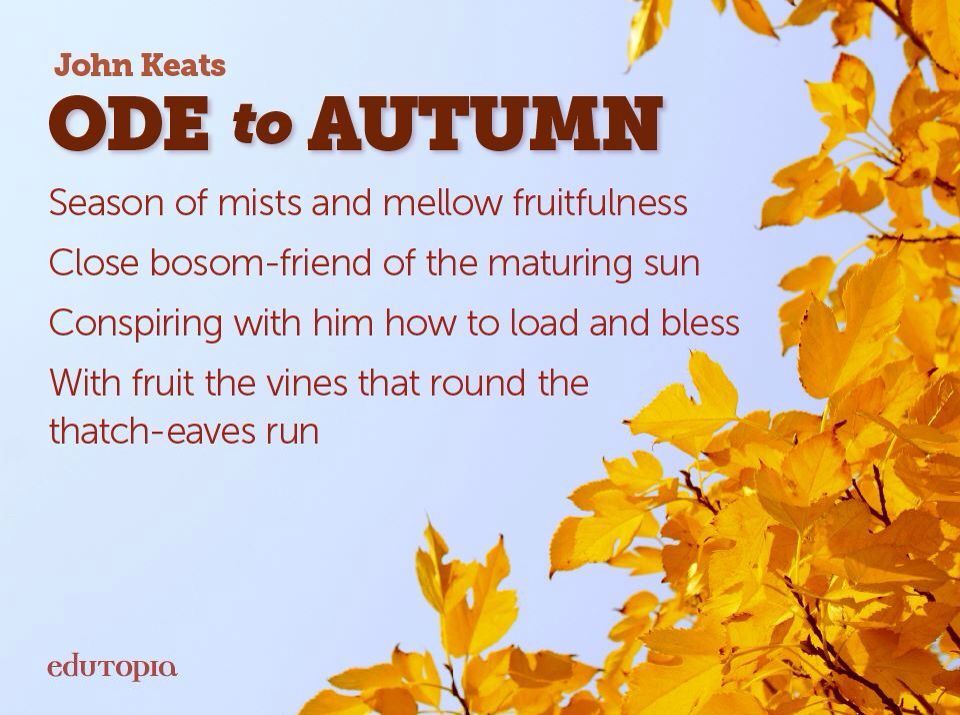To Autumn By John Keats
Jun 29, 2019 • 218 views

The poem "To Autumn" is often referred to as Keats' most perfect poem. While Douglas Bush reads the poem as an instance of escapism - less a resolution of perplexities of life than an 'escape into the luxury of pure sensation'. This poem is about the season - autumn which is a season of fruitfulness. The fruits are ripened, hazelnuts get the sweet kernel, bees have continuous access to nectar, etc. These imageries which the poet has shown tells us that they forget that the season of autumn will also come to an end. In this poem, life shows the growth and maturity and death shows harvest. Autumn is shown as a reaper in the process of reaping. It is just a transitory phase.
The season of autumn is also personified as a carefree woman who is drowsy and can spend her time, staring apples. The ending of the poem shows us the various sounds of mourning that nature creates. The end of the day also indicates towards the end of youth or life. The poet starts the poem by appreciating autumn but he also knows that it will end soon and it has all the time to watch the fruits being crushed, till the last drop of juice. Autumn is here to watch death and this season brings its awareness with itself. Winter, the end of autumn, is symbolic to death. The poet accepts the end as it is a natural part of life. Arthur Davenport reads this poem as a poem of "sorrow, loss, and bereavement".
Autumn doesn't care about any life and death but the writer is romanticizing it. The metaphor of women is used by the poet. "Maturing sun"- summer season, 'sitting careless' -carefree, "winnowing wind"- Abrams -When Keats autumn makes a personal appearance as a mature woman.
Autumn as a reaper in the process of reaping. "Gnats mourn" - insects are mourning the death of natural vegetation or impending death of the writer. Autumn has all the time to watch fruits being crushed. It is here to watch death. Keats is deliberating upon death and decay which is brought in the poem. Season of fruitfulness and a season of decay. The poet is creating a dichotomy of life and death both. It's a season of harvest. Constant chirping of birds symbolizes the end of the day, can be interpreted as the end of one's life or end of one's youth. The poet is talking about how this youthfulness has harvested.
The similarity between both the poems 'Ode to A Nightingale' and 'To Autumn' is that he illustrates how joy and sadness exist together. Being aware of death, he appreciates life by one's own mortality. He wants others to understand through his poem, that we should not take our life for granted. Both the poem oscillates between notions of life and death. Douglas Bush has identified not merely the evocative power of such implicit antitheses, but their function in the drama of the poem: 'The fact of death, real death, opens all the stops for what now becomes the dominant theme, the contrast between the mortality of man and the immortality of art'.
